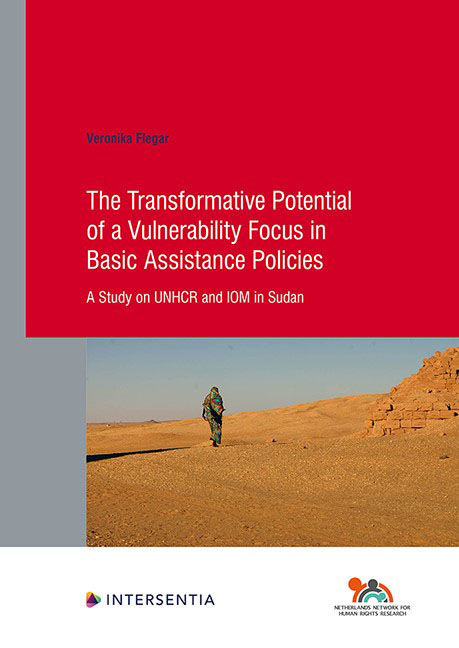 The Transformative Potential of a Vulnerability Focus in Basic Assistance Policies
The Transformative Potential of a Vulnerability Focus in Basic Assistance Policies Published online by Cambridge University Press: 11 November 2021
This chapter provides an overview of the themes and concepts that are relevant for understanding the two case studies. These themes and concepts were not relied upon from the start but, in line with Corbin and Strauss’ grounded theory method, emerged gradually as the data collection and analysis of the first case study progressed. Yet, they are outlined here because they form the backbone and structure of the case studies and presenting them upfront is meant to serve as a guide to the reader.
The chapter is largely written in the first person to underline the following point: an empirical social phenomenon can usually be understood on the basis of several legitimate alternative theories and explanations and a single, definitive connection of empirical observations to theory remains elusive. Theories in the social sciences and humanities are thus “resources of semiotic mediation” which “not only reflect the world in the mind's eye” but also “(re)construct it according to our pragmatic interests”. The choice in this respect depends on the extent to which the researcher perceives a theory as relevant to the issue at stake.
The issue at stake in this study, i.e. the main research question, is how the vulnerability focus in basic assistance policies by UNHCR and IOM in Khartoum (Sudan) contribute to the vulnerability notion's alleged transformative potential for the realisation of universal human rights. With this in mind, I developed three themes that are further distinguished into a number of concepts and codes. These themes, concepts and codes emerged from the data and were employed to structure and interpret the findings so as to make sense of the case studies in a way that would facilitate an answer to the main research question. I developed these themes, concepts and codes on the basis of a combination of three considerations:
– The Data: what I encountered in the desk research, during participant observation and in the interviews with basic assistance providers at UNHCR and IOM in Khartoum;
– The Literature: what I had read on UNHCR and IOM in humanitarian governance literature, on vulnerability assessments for basic assistance in public administration literature and on addressing vulnerability in social work literature.
To save this book to your Kindle, first ensure [email protected] is added to your Approved Personal Document E-mail List under your Personal Document Settings on the Manage Your Content and Devices page of your Amazon account. Then enter the ‘name’ part of your Kindle email address below. Find out more about saving to your Kindle.
Note you can select to save to either the @free.kindle.com or @kindle.com variations. ‘@free.kindle.com’ emails are free but can only be saved to your device when it is connected to wi-fi. ‘@kindle.com’ emails can be delivered even when you are not connected to wi-fi, but note that service fees apply.
Find out more about the Kindle Personal Document Service.
To save content items to your account, please confirm that you agree to abide by our usage policies. If this is the first time you use this feature, you will be asked to authorise Cambridge Core to connect with your account. Find out more about saving content to Dropbox.
To save content items to your account, please confirm that you agree to abide by our usage policies. If this is the first time you use this feature, you will be asked to authorise Cambridge Core to connect with your account. Find out more about saving content to Google Drive.